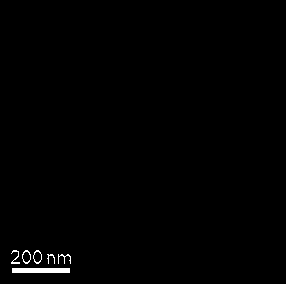A kind of manufacturing method of lithium-sulfur battery positive electrode and lithium-sulfur battery
A technology for lithium-sulfur batteries and manufacturing methods, which is applied in the field of lithium-ion batteries, can solve problems such as poor stability, positive electrode structure damage, and low rate, and achieve the effects of ensuring uniformity and conductivity, reducing sulfur loss, and balancing volume changes
- Summary
- Abstract
- Description
- Claims
- Application Information
AI Technical Summary
Problems solved by technology
Method used
Image
Examples
Embodiment 1
[0041] A method for making a positive electrode of a lithium-sulfur battery, specifically comprising the following steps:
[0042] Step 1: Take 10g of Bacillus subtilis powder (GPBBS), add 4g of glucose, 200ml of deionized water, stir well and let it stand for 16 hours to activate.
[0043] Step 2: Take the activated bacterial suspension and centrifuge at 1500 rpm for 2 minutes, and discard the precipitate.
[0044] Step 3: Take the centrifuged turbid liquid in step 2 and centrifuge it at 4500 rpm for 5 min, discard the supernatant, and precipitate the crude GPBBS.
[0045] Step 4, the crude GPBBS was washed and centrifuged in sequence with ethanol, hydrochloric acid and water to obtain a refined GPBBS wet powder, which was freeze-dried for 72 hours to obtain a refined GPBBS dry powder.
[0046] Step 5. After heating the refined GPBBS dry powder at 500°C for 4 hours without oxygen, mix it with sulfur powder at a mass ratio of 1:2, and mill it with a high-energy ball mill at a...
Embodiment 2
[0057] A method for making a positive electrode of a lithium-sulfur battery, specifically comprising the following steps:
[0058] Step 1: Take 10 g of camellia oleifera shells and soak them in sulfuric acid for 12 hours, then wash them with ethanol and clear water.
[0059] Step 2: Mechanically grind the camellia oleifera husk to a particle size of about 900nm, remove impurities, and freeze-dry.
[0060] Step 3: Heat the freeze-dried camellia oleifera shell to 410°C for 2 hours without oxygen to obtain charcoal powder of camellia oleifera shell, then mix it with sulfur powder at a mass ratio of 1:2, and ball mill at 3500 RPM.
[0061] Step 4, step 3 obtained sulfur compound oleifera shell charcoal obtained sulfur compound bacterial charcoal powder gets 0.4g and is dispersed in 4.5g N,N-dimethylformamide (DMF), adds 0.6g polyacrylonitrile (PAN), and carries out Electrospinning, controlling the thickness of the electrospinning thread to be about 1000nm, to obtain sulfur-compos...
Embodiment 3
[0067] A method for making a positive electrode of a lithium-sulfur battery, specifically comprising the following steps:
[0068] Step 1: Take 10 g of dried osmanthus leaves and soak them in sulfuric acid for 12 hours, then wash them with ethanol and clear water.
[0069] Step 2: mechanically grind the leaves of osmanthus fragrans to a particle size of about 900nm, remove impurities and freeze-dry.
[0070] Step 3: Heat the obtained sweet-scented osmanthus leaves to 600° C. for carbonization in isolation from oxygen, then mix them with sulfur powder at a mass ratio of 1:2, and ball mill at a speed of 3500 RPM.
[0071] Step 4: Get 0.8g of the obtained sulfur composite leaf charcoal powder and disperse it in 4.5gN, N-dimethylformamide (DMF), add 0.6g polyacrylonitrile (PAN), and carry out electrospinning to control the electrospinning process. The thread thickness is about 1000nm. Obtain multi-level micro-tandem osmanthus leaf charcoal.
[0072] Step five, the multi-stage m...
PUM
| Property | Measurement | Unit |
|---|---|---|
| diameter | aaaaa | aaaaa |
| diameter | aaaaa | aaaaa |
| length | aaaaa | aaaaa |
Abstract
Description
Claims
Application Information
 Login to View More
Login to View More - R&D
- Intellectual Property
- Life Sciences
- Materials
- Tech Scout
- Unparalleled Data Quality
- Higher Quality Content
- 60% Fewer Hallucinations
Browse by: Latest US Patents, China's latest patents, Technical Efficacy Thesaurus, Application Domain, Technology Topic, Popular Technical Reports.
© 2025 PatSnap. All rights reserved.Legal|Privacy policy|Modern Slavery Act Transparency Statement|Sitemap|About US| Contact US: help@patsnap.com



